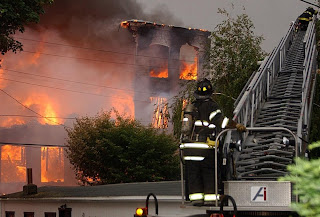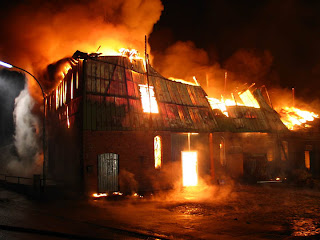 Compiled from dispatches
Compiled from dispatchesVICTORIA, Australia (February 9, 2009) -- The death toll after the worst wildfires in Australian history has risen to 108, with thousands of firefighters tackling the blazes.
Fires caused by temperatures of approximately 116F have burnt countless homes across the state of Victoria, with entire towns destroyed as unpredictable winds and high temperatures combined for the most deadly Australian bush fires in more than 25 years.
"It rained fire," said one survivor, showing his singed shirt. "We hid in the olive grove and watched our house burn."
On Sunday, the remains of charred cars littered the smoldering towns, about 50 miles north of Melbourne. Some vehicles had crashed into each other as their drivers frantically tried to escape the approaching fires.
Thousands of firefighters battled to contain the blazes, which witnesses said reached four stories high and raced across the land like speeding trains, spewing hot embers as far as the horizon. The most serious fires are burning north of the Victorian capital, Melbourne, reported the UK Guardian.
See current County Fire Authoirty Incidents and Statewide Fire Locator
Entire townships were razed to the ground, with television footage showing the picturesque hamlet of Marysville reduced to smoking ruins. Victoria state's Country Fire Authority said only one building was left standing in the popular tourist hamlet.
Australian prime minister Kevin Rudd said the nation had experienced an "appalling tragedy"."Hell in all its fury has visited the good people of Victoria in the last 24 hours," he added.
Queen Elizabeth today expressed her shock at the destruction caused by this weekend's fire."I send my heartfelt condolences to the families of all those who have died and my deep sympathy to the many that have lost their homes in this disaster," the head of the commonwealth said.
Victoria premier John Brumby confirmed he has accepted an offer for help from the national army to assist firefighters in the fight to contain the blazes. He indicated that the state has already received A$10 million in emergency aid.
The neighboring State of New South Wales has sent more than 250 firefighters, 50 tankers, 25 search-and-rescue experts, nine identification experts and five paramedics to help in Australia's worst bushfire disaster. New South Wales Premier Nathan Rees added that the state will provide assistance for as long as is needed to bushfire-ravaged Victoria.
A group of 30 American volunteers, who serve as seasonal smokejumpers with CalFire, plan to fly to Sydney on Monday, then travel to Victoria to assist with the firefighting effort. Ten American firefighters, part of a training team serving in South Australia, are already working on the frontlines north of Melbourne.
The BBC reports that Bushfires are common in Australia, but the current blazes have eclipsed the death toll from what had been the previous worst fire in 1983, when 75 people died on a day that became known as Ash Wednesday.
View slideshow produced by Australian Broadcasting----------
 Delaware State Police Aviation crew introduce Wilmington firefighters to Bell 412.
Delaware State Police Aviation crew introduce Wilmington firefighters to Bell 412.










